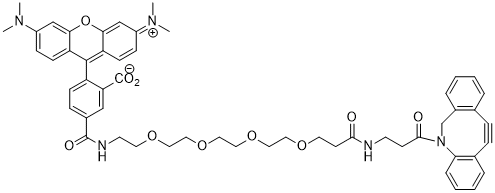Fluorescent PEG improves drug delivery, biosensing, and molecular imaging with its biocompatible design. It uses dyes like Cyanine 3, Cyanine 5, and Rhodamine to enhance solubility and photostability. These features make it easier to track biological processes. Fluorescent PEG drives progress in pharmaceutical research by enhancing controlled drug delivery and detection accuracy.
Fluorescent PEG
Fluorescent PEG: Advancing Pharmaceutical Research with Polymer Technology
Fluorescent PEG, or fluorescent polyethylene glycol, combines unique fluorescent properties with excellent biocompatibility. It is increasingly important in pharmaceutical research, especially in drug delivery, biosensing, and molecular imaging.
[caption id="attachment_71547" align="alignnone" width="847"] Extravasation of the fluorescent macromolecule IRDye 800CW-PEG to the brain after treatment with (left) ACT+A+E and (right) ACT+A.[/caption]
Extravasation of the fluorescent macromolecule IRDye 800CW-PEG to the brain after treatment with (left) ACT+A+E and (right) ACT+A.[/caption]
 Extravasation of the fluorescent macromolecule IRDye 800CW-PEG to the brain after treatment with (left) ACT+A+E and (right) ACT+A.[/caption]
Extravasation of the fluorescent macromolecule IRDye 800CW-PEG to the brain after treatment with (left) ACT+A+E and (right) ACT+A.[/caption]
Key Features and Benefits:
- Fluorescent Properties: Fluorescent PEG includes dyes attached to its backbone, making it easy to track and visualize in biological systems. This allows researchers to precisely monitor its movement.
- Enhanced Drug Delivery: When PEG is incorporated into drug delivery systems, it significantly improves drug solubility and stability. As a result, drugs are delivered more effectively, leading to better therapeutic outcomes.
- Biocompatibility: PEG is non-toxic and non-immunogenic, meaning the immune system doesn’t recognize it. This lowers the risk of adverse reactions, making it an ideal choice for medical and drug delivery applications.
- Superior Performance: Fluorescent PEG performs better than conventional fluorescent molecules due to its enhanced hydrophilicity. Dyes like Cyanine 3, Cyanine 5, Cyanine 7, Fluorescein, BDP, Rhodamine, and Pyrene offer bright fluorescence, high photostability, and resistance to self-quenching, from UV to near-infrared ranges.
Applications:
- Drug Delivery Systems: PEG improves solubility and stability, which allows for more efficient and controlled drug delivery.
- Biosensors: It increases detection sensitivity and accuracy, improving biosensing applications.
- Molecular Imaging: Its advanced fluorescent properties enable detailed imaging and tracking of biological processes.



















